
Rio de Janeiro Downtown Tour
3 h
Bekräftelse direkt
Om den här aktiviteten
Itinerary
This is a typical itinerary for this product
Stop At: Sao Bento Monastery, Rua Dom Gerardo 40 Centro, Rio de Janeiro, State of Rio de Janeiro 20090-030 Brazil
The Abbey of Our Lady of Montserrat, more commonly known as the Mosteiro de São Bento (Monastery of St. Benedict), is a Benedictine abbey located in downtown Rio de Janeiro, Brazil.
The abbey was founded by Benedictine monks who came from the state of Bahia in 1590. It is still operational today, along with the Colégio de São Bento (St. Benedict College) nearby.
The façade was part of the original Mannerist project and featured a centralized edifice with three archways at the entrance, as well as a triangular gable. Two towers crowned by pyramidal spires flanked the entryway. After passing through the entrance archway, the building houses a tiled porch and iron gates from the nineteenth century.
Duration: 30 minutes
Stop At: The Metropolitan Cathedral of Saint Sebastian, Avenida Republica do Chile 245, Rio de Janeiro, State of Rio de Janeiro 20031-170 Brazil
With architecture inspired by the Mayan pyramids of Mexico, the conical shape is believed to give proximity to God. Four stained glass windows run from floor to ceiling forming a cross at the top. Acoustics are "heavenly" here!
Duration: 30 minutes
Stop At: Av. Pres. Castelo Branco, Portao 3 Portao 3 - Maracana, Rio de Janeiro, State of Rio de Janeiro 20271-130 Brazil
The Maracanã Stadium, was inaugurated in 1950 to host the World Cup. It is the largest stadium in Brazil, with capacity for more than 78 thousand fans. The "Maraca", as it is also called, besides the games of the national champions, is the Brazilian and of other great international competitions, is the stage of the great musical spectacles.We will not go inside it and will make a quick stop outside, at Bellini's statue, for pictures visit.
Duration: 15 minutes
Pass By: Forte Duque de Caxias, Praca Almirante Julio de Noronha, Rio de Janeiro, State of Rio de Janeiro 22010-020 Brazil
Fort Copacabana is a military base at the south end of the beach that defines the district of Copacabana, Rio de Janeiro. The base is open to the public and contains the Museu Histórico do Exército (Army Historical Museum) and a coastal defense fort that is the actual Fort Copacabana.
Pass By: Carioca Aqueduct, Rua Riachuelo 27, Rio de Janeiro, State of Rio de Janeiro 20230-010 Brazil
The Carioca Aqueduct is located in the centre of the city, in the Lapa neighbourhood, and is frequently called Arcos da Lapa (Lapa Arches) by Brazilian people. Since the end of the 19th century the aqueduct serves as a bridge for a popular tram that connects the city centre with the Santa Teresa neighbourhood uphill, the Santa Teresa Tramway.
Stop At: Escadaria Selaron, Rua Joaquim Silva S/N, Rio de Janeiro, State of Rio de Janeiro 20241-110 Brazil
Escadaria Selarón, also known as the 'Selaron Steps', is a set of world-famous steps in Rio de Janeiro, Brazil. They are the work of Chilean-born artist Jorge Selarón who claimed it as "my tribute to the Brazilian people.
In 1990, Selarón began renovating dilapidated steps that ran along the front of his house. At first, neighbours mocked him for his choice of colours as he covered the steps in fragments of blue, green and yellow tiles – the colours of the Brazilian flag. It started out as a side-project to his main passion, painting, but soon became an obsession. He found he was constantly out of money, so Selarón sold paintings to fund his work. It was long and exhausting work but he continued on and eventually covered the entire set of steps in tiles, ceramics and mirrors.
Duration: 30 minutes
Pass By: Botafogo Beach, Rio de Janeiro, State of Rio de Janeiro 22250-040 Brazil
Botafogo is a beachfront neighbourhood. It is a mostly upper middle class and small commerce community, and is located between the hills of Mundo Novo, Dona Marta (which separates it from Laranjeiras) and São João (which separates it from Copacabana). The word Botafogo also refers to a Latin American ballroom dance move, named so because the area of Botafogo is where it originated.
Pass By: Flamengo Beach, Rio de Janeiro, State of Rio de Janeiro Brazil
Flamengo is located between Catete and Botafogo districts on the edge of Guanabara Bay. The beachfront area is dominated by the Brigadier Eduardo Gomes Park, also known as Aterro do Flamengo, built on nearly 300 acres (1.2 km²) of land reclaimed from the bay and completed in 1965. The park features gardens designed by well-known Brazilian landscape designer Roberto Burle Marx.
Stop At: Rua do Lavradio, Rio de Janeiro, State of Rio de Janeiro Brazil
Lavradio street is a famous place in Lapa district because it has several antique shops, bars and restaurants that attract people all the time. On the first weekend of each month there is a street fair that concentrates national and foreign tourists and locals who know of the local fame. The bars occupy the streets with small tables and several stalls market everything, which gives a respectable agglomeration
Duration: 20 minutes
Läs mer
Visa mindre
This is a typical itinerary for this product
Stop At: Sao Bento Monastery, Rua Dom Gerardo 40 Centro, Rio de Janeiro, State of Rio de Janeiro 20090-030 Brazil
The Abbey of Our Lady of Montserrat, more commonly known as the Mosteiro de São Bento (Monastery of St. Benedict), is a Benedictine abbey located in downtown Rio de Janeiro, Brazil.
The abbey was founded by Benedictine monks who came from the state of Bahia in 1590. It is still operational today, along with the Colégio de São Bento (St. Benedict College) nearby.
The façade was part of the original Mannerist project and featured a centralized edifice with three archways at the entrance, as well as a triangular gable. Two towers crowned by pyramidal spires flanked the entryway. After passing through the entrance archway, the building houses a tiled porch and iron gates from the nineteenth century.
Duration: 30 minutes
Stop At: The Metropolitan Cathedral of Saint Sebastian, Avenida Republica do Chile 245, Rio de Janeiro, State of Rio de Janeiro 20031-170 Brazil
With architecture inspired by the Mayan pyramids of Mexico, the conical shape is believed to give proximity to God. Four stained glass windows run from floor to ceiling forming a cross at the top. Acoustics are "heavenly" here!
Duration: 30 minutes
Stop At: Av. Pres. Castelo Branco, Portao 3 Portao 3 - Maracana, Rio de Janeiro, State of Rio de Janeiro 20271-130 Brazil
The Maracanã Stadium, was inaugurated in 1950 to host the World Cup. It is the largest stadium in Brazil, with capacity for more than 78 thousand fans. The "Maraca", as it is also called, besides the games of the national champions, is the Brazilian and of other great international competitions, is the stage of the great musical spectacles.We will not go inside it and will make a quick stop outside, at Bellini's statue, for pictures visit.
Duration: 15 minutes
Pass By: Forte Duque de Caxias, Praca Almirante Julio de Noronha, Rio de Janeiro, State of Rio de Janeiro 22010-020 Brazil
Fort Copacabana is a military base at the south end of the beach that defines the district of Copacabana, Rio de Janeiro. The base is open to the public and contains the Museu Histórico do Exército (Army Historical Museum) and a coastal defense fort that is the actual Fort Copacabana.
Pass By: Carioca Aqueduct, Rua Riachuelo 27, Rio de Janeiro, State of Rio de Janeiro 20230-010 Brazil
The Carioca Aqueduct is located in the centre of the city, in the Lapa neighbourhood, and is frequently called Arcos da Lapa (Lapa Arches) by Brazilian people. Since the end of the 19th century the aqueduct serves as a bridge for a popular tram that connects the city centre with the Santa Teresa neighbourhood uphill, the Santa Teresa Tramway.
Stop At: Escadaria Selaron, Rua Joaquim Silva S/N, Rio de Janeiro, State of Rio de Janeiro 20241-110 Brazil
Escadaria Selarón, also known as the 'Selaron Steps', is a set of world-famous steps in Rio de Janeiro, Brazil. They are the work of Chilean-born artist Jorge Selarón who claimed it as "my tribute to the Brazilian people.
In 1990, Selarón began renovating dilapidated steps that ran along the front of his house. At first, neighbours mocked him for his choice of colours as he covered the steps in fragments of blue, green and yellow tiles – the colours of the Brazilian flag. It started out as a side-project to his main passion, painting, but soon became an obsession. He found he was constantly out of money, so Selarón sold paintings to fund his work. It was long and exhausting work but he continued on and eventually covered the entire set of steps in tiles, ceramics and mirrors.
Duration: 30 minutes
Pass By: Botafogo Beach, Rio de Janeiro, State of Rio de Janeiro 22250-040 Brazil
Botafogo is a beachfront neighbourhood. It is a mostly upper middle class and small commerce community, and is located between the hills of Mundo Novo, Dona Marta (which separates it from Laranjeiras) and São João (which separates it from Copacabana). The word Botafogo also refers to a Latin American ballroom dance move, named so because the area of Botafogo is where it originated.
Pass By: Flamengo Beach, Rio de Janeiro, State of Rio de Janeiro Brazil
Flamengo is located between Catete and Botafogo districts on the edge of Guanabara Bay. The beachfront area is dominated by the Brigadier Eduardo Gomes Park, also known as Aterro do Flamengo, built on nearly 300 acres (1.2 km²) of land reclaimed from the bay and completed in 1965. The park features gardens designed by well-known Brazilian landscape designer Roberto Burle Marx.
Stop At: Rua do Lavradio, Rio de Janeiro, State of Rio de Janeiro Brazil
Lavradio street is a famous place in Lapa district because it has several antique shops, bars and restaurants that attract people all the time. On the first weekend of each month there is a street fair that concentrates national and foreign tourists and locals who know of the local fame. The bars occupy the streets with small tables and several stalls market everything, which gives a respectable agglomeration
Duration: 20 minutes
Ingår
- Professional guide
- Hotel pickup and drop-off (selected hotels only)
- Transport by air-conditioned minivan
- Entry/Admission - Sao Bento Monastery
Ingår ej
- Gratuities
- Entry/Admission - Maracana
Extra
- Confirmation will be received at time of booking
- Wheelchair accessible, please advise at time of booking
- Children up to 5 years old with ID and on the lap will be free
Funktioner
Turism
90%
Kulturellt
80%
Sport
15%
Recensioner
Du kanske också gillar









 Visa alla 30 Samlingar
Visa alla 30 Samlingar
Klicka för att upptäcka andra upplevelser
Visa alla
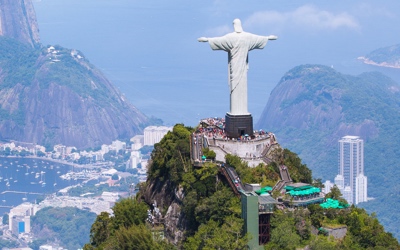
Samlingar
Christ Statue Corcovado
89 Aktiviteter
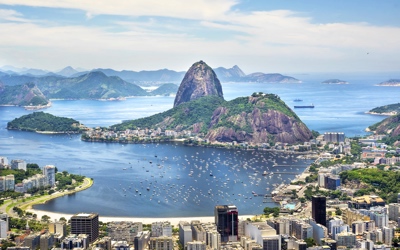
Samlingar
Sugarloaf Mountain
79 Aktiviteter

Samlingar
Walking Tour
28 Aktiviteter
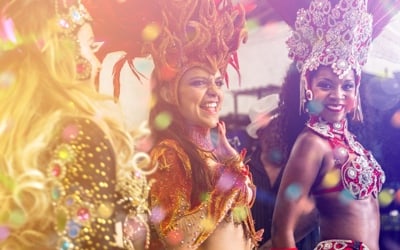
Samlingar
Carnival
32 Aktiviteter
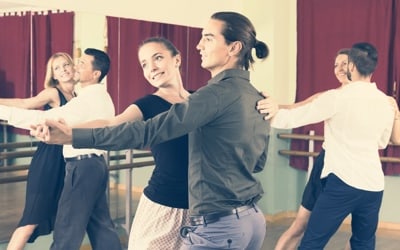
Samlingar
Dance Class
12 Aktiviteter
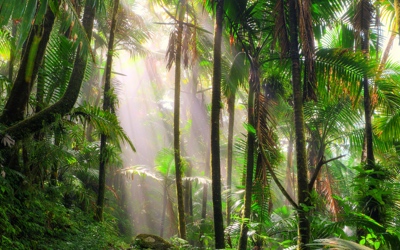
Samlingar
Garden & Forest
63 Aktiviteter

Samlingar
Jeep Tour
10 Aktiviteter
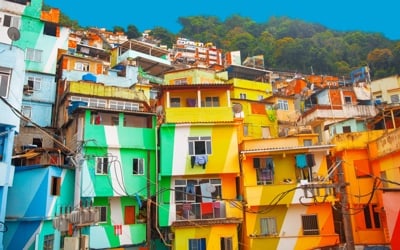
Samlingar
Favela Tour
23 Aktiviteter

Samlingar
Santa Teresa
20 Aktiviteter

Samlingar
Boat & Cruise
37 Aktiviteter






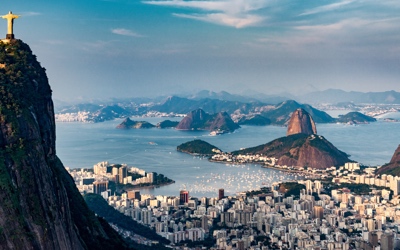

If you want to see the other many attractions Rio has to offer, this is a great way to see them in 3 hours. Did not stop at all the attractions like the Maracana Stadium and the Arches but did stop at most of the places like the Rio de Janeiro Cathedral, The Sambadrome and the Escadaria Selaron Steps. Can be very busy with the traffic and to get round these places in 3 hours was excellent. Would of liked to of spent more time at the Steps but with the limited time and busy traffic i would recommend this tour to see Downtown Rio in one afternoon.